On the Road is a weekday feature spotlighting reader photo submissions.
From the exotic to the familiar, whether you’re traveling or in your own backyard, we would love to see the world through your eyes.
Happy Monday! We are apparently moving from summer to fall this week with Albatrossity and BillinGlendale. We learn from Elma what Wisconsin and Greece have in common, and then we round out the week with barns and cats, courtesy of JanieM and Steve from Mendocino, respectively.
Albatrossity
Week 8 of our Summer in Flyover Country series brings us a taste of fall, and the next installment will confirm that trend. Summer is over. Have a glass of hot mulled cider!
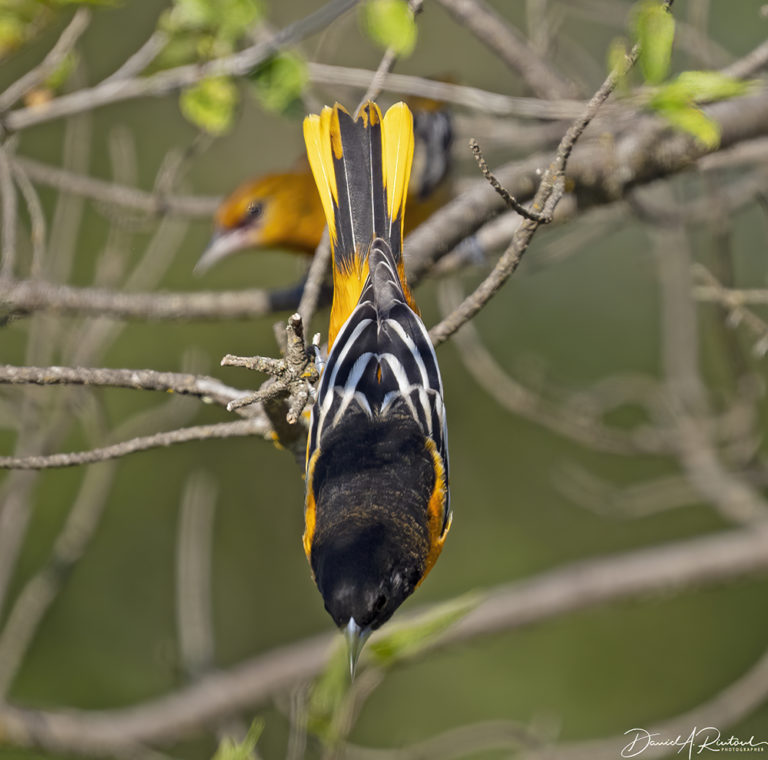
Many of our summer resident birds are still here, but getting restless. The Baltimore Oriole (Icterus galbus) pair shown here may be already in Central or South America by the time you read this. In recent years the practice of feeding grape (and other) jelly has introduced this species to a whole new fan club of backyard birders. They might benefit from a trip away from the backyard to see these guys, and to introduce themselves to the many other colorful species that rarely are seen in the backyard.
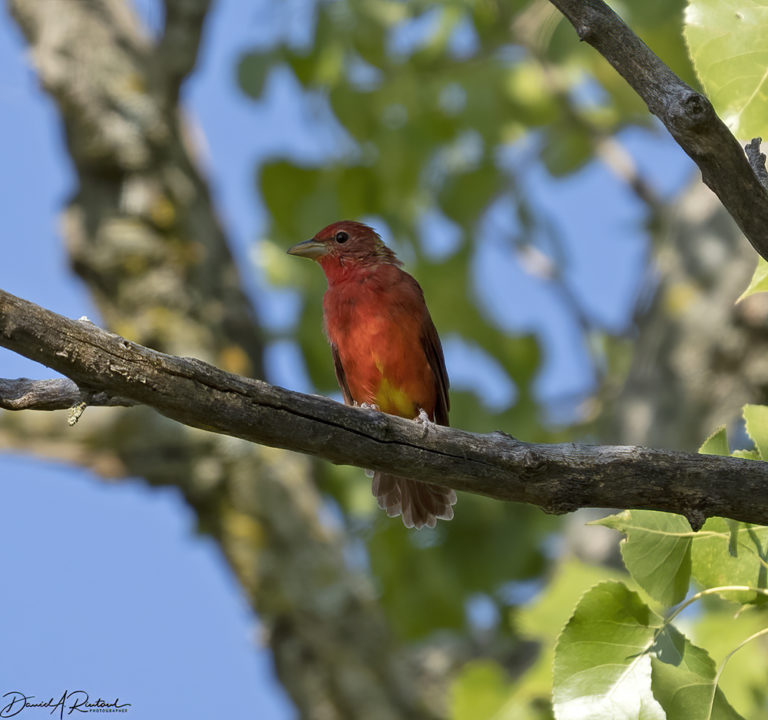
Another colorful denizen of our woodlots and backyards is the Summer Tanager (Piranga rubra). If you look closely at the belly of this male, you can see the yellow feathers that identified him all summer long as a bird in his second year. That second-year male plumage features a mixture of yellow and red body feathers, but generally the belly is yellow. So this one has just about completed the molt known as the prebasic molt, replacing those adolescent feathers with bright red ones. He’ll definitely impress the ladies next summer!
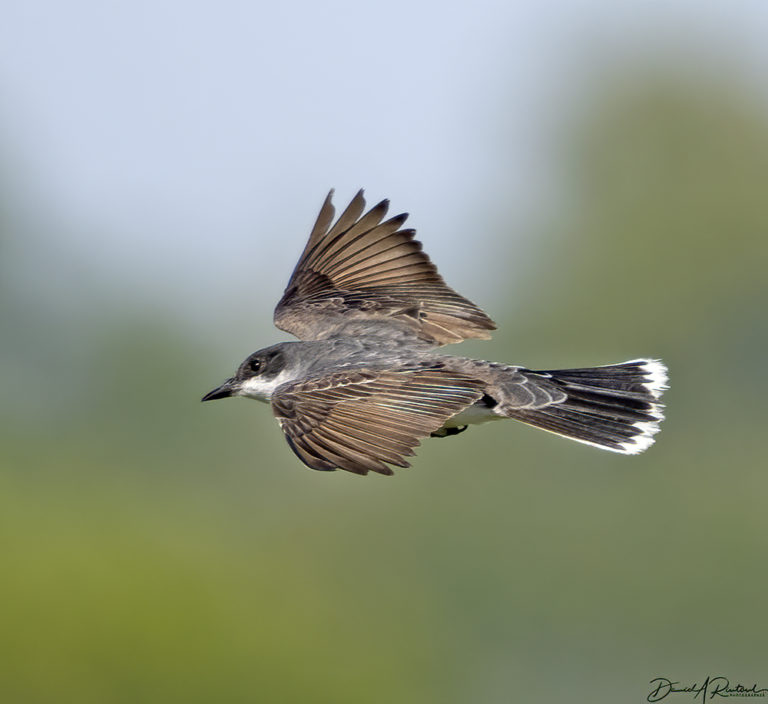
Eastern Kingbirds (Tyranus tyrannus, a bird so uppity that they named it twice) are summer residents here, and also considerably north of here. Those northerly birds are starting to migrate, with large flocks often feasting on the abundant and nutritious berries of the Rough-leaved Dogwood on our local prairies.
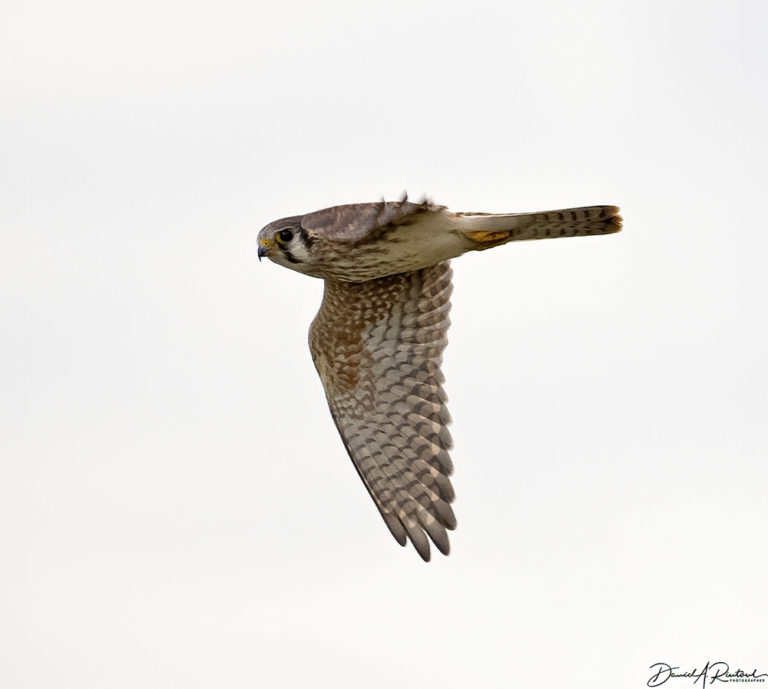
Female American Kestrel (Falco sparverius). This is the smallest falcon in North America, and certainly one of the prettiest falcons in all the world. We are fortunate to have them as year-round residents here. I normally wouldn’t try for a shot on an overcast day like this one was, but I have a new lens, and I was anxious to see how it performed under those conditions.
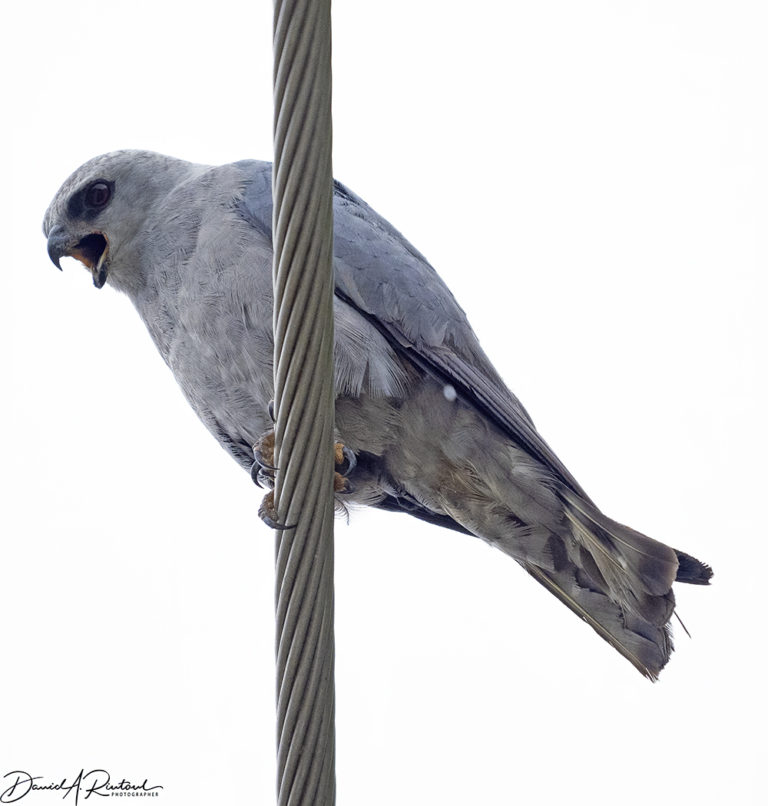
This hawk, with the heavy-eyeliner Goth affect, is an adult Mississippi Kite (Ictinia mississipiensis). Late August is a great time to see this species here. Our resident birds are joined by flocks of migrants, and in recent years by the occasional Swallow-tailed Kite, all feeding on the abundant dragonflies, cicadas, grasshoppers, and other flying insects that the prairies produce in late summer. A friend of mine runs a survey route for this species in his town in southern Kansas, and some days he will record 500+ Mississippi Kites along that track! This one is trying to cough up a pellet, so I left it to do that in private.
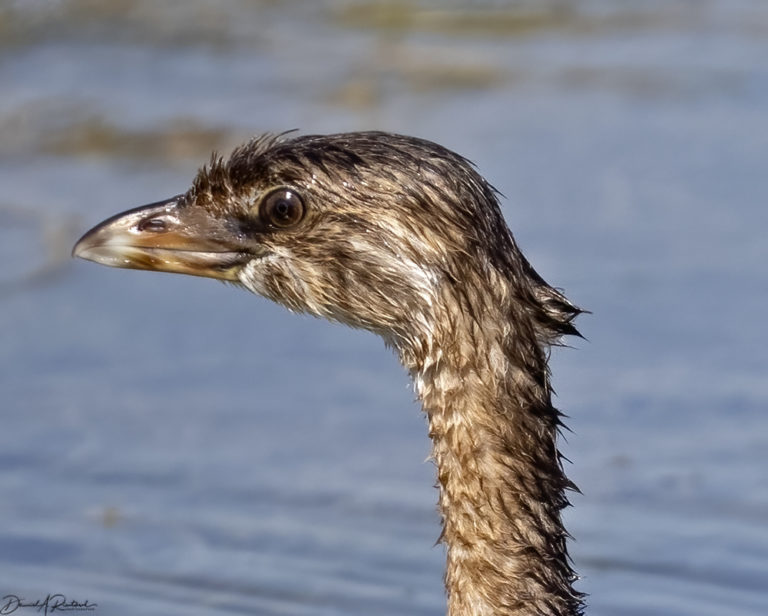
A visit to a wetland in Flyover Country is always rewarding, but the excitement picks up as fall approaches. This young Pied-billed Grebe (Podilymbus podiceps) undoubtedly hatched out on the refuge, and soon will be joining its parents, siblings, and conspecifics for its first trip south.
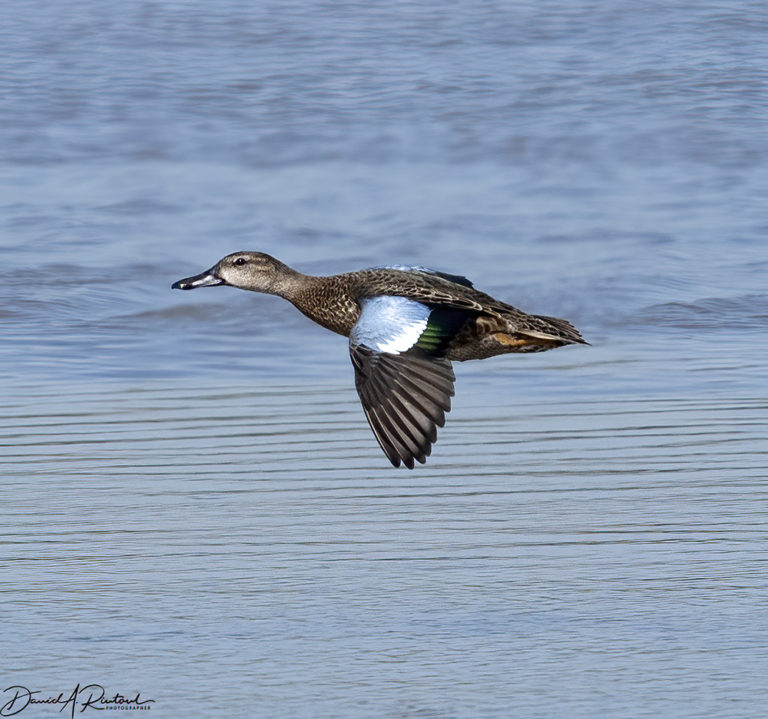
Ducks have not yet started to migrate in earnest, and this Blue-winged Teal (Spatula discors) may indeed be a native-born Kansan, since this species can be found in summer at many sites in the state. Many ducks in late summer sport a plumage known as “eclipse” plumage, and the males and females can look very similar, unlike the situation in the spring, where the males are quite gaudy. But there are some differences, and the white throat of this bird identifies it as a female.
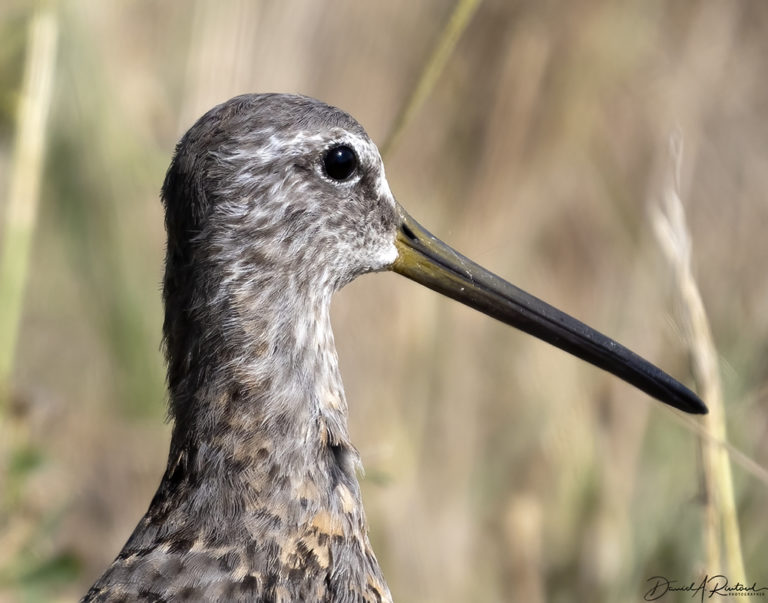
Some true Arctic-breeding migrants are starting to trickle in. This is a Long-billed Dowitcher (Limnodromus scolopaceus), a species that has been featured previous in OTR posts this summer. But this was a very obliging bird and posed for a portrait, so I include it here. Generally these birds have their heads in motion, in the water for much of the time, so it was good to get a closer look at the feather patterns of the head and neck.
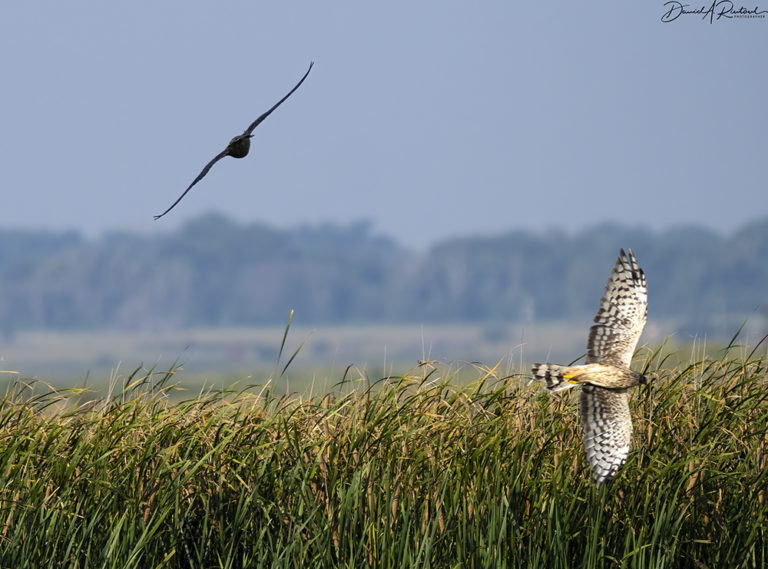
The final image is not aesthetically brilliant, but I was happy to see it when I got the camera home and loaded the images onto the computer. A young Peregrine Falcon (Falco peregrinus) was hunting over the marshes and spooked up a Northern Harrier (Circus hudsonius), but thankfully both went on their way without investigating each other further.

Betty Cracker
Considerate of you! :) Gorgeous photos as always.
I had a successful birding by boat trip Saturday morning — we saw a gorgeous male Snail Kite hanging out in a tree with several vultures. (Well, near them, anyway. He wasn’t necessarily with them.)
I also missed an opportunity to get a great close-up shot of a Belted Kingfisher on the wing. I set my camera down to attend to a beverage, and it practically dive-bombed the boat.
WayneL140
As always, fascinating photos. Well done.
Albatrossity
@Betty Cracker:
That is a tough bird to photograph, but a boat is definitely the best place to try to do that. If you are on land and approach one, they almost always fly to the other side of whatever body of water it is perched near, and repeat the process as needed if you manage to get to the other side. Sorry you missed the shot; I definitely can empahthize!
marklar
Great series!
Perfect capture of the kestrel! I’ve always called Northern Harriers my “Nemesis Bird”. For some reason, getting them into sharp focus has always been next to impossible.
arrieve
Just gorgeous as always. I continue to be amazed by your ability to capture birds in flight; I can barely manage to get pictures of them sitting in one place (as my many, many pictures of tree branches with no bird on them will attest).
That blue-winged teal looks like an optical illusion.
Betty
Magnificent birds and excellent photographer! How sweet.
WaterGirl
I love the little red guy! (aka Summer Tanager)
JanieM
I got a chuckle out of the Pied-billed Grebe. After the first five it looked a little wet and bedraggled, and maybe exasperated as a result. Of course, that’s me anthropomorphizing; I’m sure wet and what looks like bedraggled to me is heaven to a Pied-billed Grebe.
Thanks as always for the lovely pictures and the continuing education.
@arrieve:
I know the feeling. Mine has more to do with trying to capture the cliff swallows that nest around my house — all I ever get is a series of blurs.
S. Cerevisiae
Love the bird photos! Merlins are more common than kestrels up here in the summer, one year they nested across the yard in a spruce tree and we watched them raise 4 chicks, we knew it was feeding time by the noise. Merlins are small, fast, and fearless, I saw them chase off eagles and blue herons.
Albatrossity
@S. Cerevisiae: Yes, Merlins show up here in late August/early September, and I do look forward to the arrival of that, as you say, fearless bird. I’ve already seen a couple this season, and expect to see more as fall progresses. Thanks for sending them this way!
way2blue
I had no idea the Baltimore Orioles were so gorgeous. Thanks for sharing.
J R in WV
Thanks, again, for the excellent photos and commentary. We are very fortunate to have fellow jackals like you posting here. I always learn new tidbits about birbs on your posts!
Curiously, he asks what new lens? IIRC you were using a Lumix/Leica 400mm zoom in the before times, wondering what you thought would be an improvement?
stinger
God, I love your pictures.
Mike S (Now with a Democratic Congressperson!)
All great pics! I wish we had kites regularly here in PA. They are just so much fun to watch flying.
JAM
Once while we were camping, a kite (I think) kept trying to strike my BIL’s bass lure when he would cast it, so he took the hook off and kept throwing it for him. The bird must have figured out that it wasn’t a real fish because he struck it several times, but he seemed to be enjoying the game.
mvr
I like that last one with the two birds.